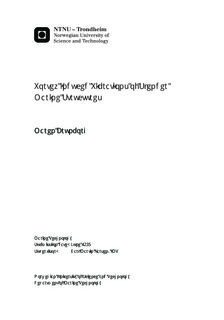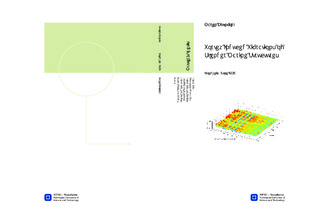| dc.description.abstract | The main objective of this thesis is to study the behaviour of slender marine structures exposed to vortex induced vibrations (VIV). Especially the interaction between active response frequencies is important. This is done by analysing results from an experiment simulating VIV on a riser. Improved understanding of this phenomenon is important for the marine- and offshore industry as operations subsea and in deeper waters are in growth. Hence, a goal is to use findings from experiments in an attempt to improve VIVANA, a program predicting responses regarding VIV. The first part of the thesis include an overview of ways to analyse and process measurements from experiments in order to gain information on VIV. A literature study on how VIVANA select active response frequencies and how they are predicted to interact, is also included.Based on the first part, an analysis of results from the "NDP riser high mode VIV test" is performed. The main analysis contains generation of figures showing how the active response frequencies of the riser behaves in time and space. Two different current profiles with a number of velocities are used to obtain a large sample, which is necessary in the attempt to see a pattern. Also amplitude plots are made from the measurements, mainly to get information of dominating modes.It was difficult to discover clear patterns for the frequency interaction in space and time. However, it can be seen signs of time- and space sharing, which more or less confirms the conclusions from former experiments, that the real response is a combination of these two approaches. What turned out to be the most important finding in this thesis comes from calculating the added mass of the modelled riser. The dominating mode and dominating frequency found from the mentioned plots, are used in this calculation to see how the added mass change for increasing current velocity and mode. The results show that added mass seems to stabilize around a constant value for higher current velocities and modes. If this can be verified, it is valuable information because it means that a crucial part of the analysis in VIVANA can be simplified and hence improve the program. | nb_NO |

